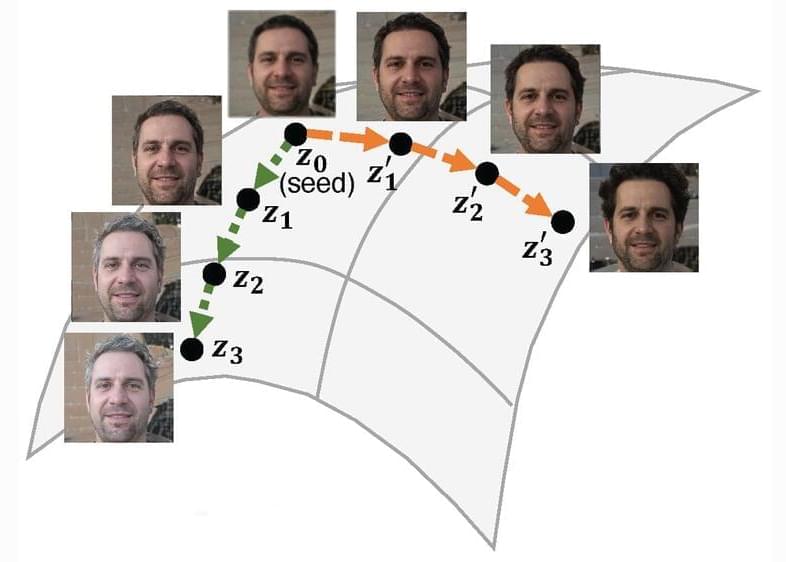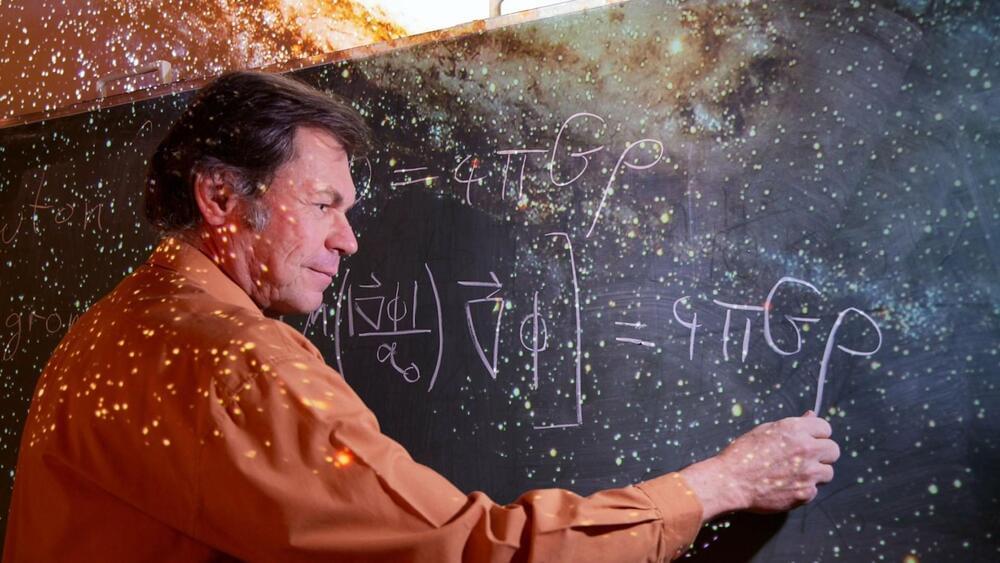A proposed study of dwarf galaxies could give insight into whether dark matter particles interact with each other.



Thermodynamic phases governed by the strong nuclear force have been linked together using multiple theoretical tools.
Quantum chromodynamics (QCD) is the theory of the strong nuclear force. On a fundamental level, it describes the dynamics of quarks and gluons. Like more familiar systems, such as water, a many-body system of quarks and gluons can exist in very different thermodynamic phases depending on the external conditions. Researchers have long sought to map the different corners of the corresponding phase diagram. New experimental probes of QCD—first and foremost the detection of gravitational waves from neutron-star mergers—allow for a more comprehensive view of this phase structure than was previously possible. Now Tuna Demircik at the Asia Pacific Center for Theoretical Physics, South Korea, and colleagues have put together models originally used in very different contexts to push forward a global understanding of the phases of QCD [1].
Phase transitions governed by the strong force require extreme conditions such as high temperatures and high baryon densities (baryons are three-quark particles such as protons and neutrons). The region of the QCD phase diagram corresponding to high temperatures and relatively low baryon densities can be probed by colliding heavy ions. By contrast, the region associated with high baryon densities and relatively low temperatures can be studied by observing single neutron stars. For a long time, researchers lacked experimental data for the phase space between these two regions, not least because it is very difficult to create matter under neutron-star conditions in the laboratory. This difficulty still exists, although collider facilities are being constructed that are intended to produce matter at higher baryon densities than is currently possible.
Imagine the booming chords from a pipe organ echoing through the cavernous sanctuary of a massive, stone cathedral.
The sound a cathedral-goer will hear is affected by many factors, including the location of the organ, where the listener is standing, whether any columns, pews, or other obstacles stand between them, what the walls are made of, the locations of windows or doorways, etc. Hearing a sound can help someone envision their environment.
Researchers at MIT and the MIT-IBM Watson AI Lab are exploring the use of spatial acoustic information to help machines better envision their environments, too. They developed a machine-learning model that can capture how any sound in a room will propagate through the space, enabling the model to simulate what a listener would hear at different locations.


The observations could not be explained by Newton’s law of universal gravitation. An alternative theory of gravity might provide the answer. Astrophysicists observed mysterious behavior in star clusters that could lead to a rewrite of fundamental principles of the theory of gravity and even disprove the existence of dark matter, a press release explains.
The new findings challenge existing preconceptions based on widely-accepted principles from Newton’s law of universal gravitation, which explain the large-scale structure and movements of the universe.

China is the first country to operate a space station on its own.
China is one step closer to completing its space station after it launched the third and final module to orbit aboard a Long March 5B rocket, a Bloomberg report.
The rocket took off from Wenchang Satellite Launch Center on Hainan Island at 3:37 p.m. local time Monday, October 31. The payload it lifted to orbit is the Mengtian laboratory module, which will complete China’s orbital station. rocket took off from Wenchang Satellite Launch Center on Hainan Island at 3:37 p.m. local time Monday, October 31. The payload it lifted to orbit is the Mengtian laboratory module, which will complete China’s orbital station.

Twitter acquired the video-sharing service in 2012 but shut it down four years later.
Elon Musk has told engineers at Twitter to work on a reboot of the short-video sharing service Vine, six years after it was shut down by the then CEO, Jack Dorsey, Business Insider.
After months of delay in acquiring the social media platform he believes has the potential to be the world’s town square, Elon Musk has wasted no time to ring in changes. After firing Twitter’s top brass, Musk is the only director of the company he now wholly owns and, as CEO is putting Twitter employees to the task.

Sunshine streaming through a window could be directly harnessed for wireless data transmission to electronic devices. KAUST researchers have designed a smart glass system that can modulate the sunlight passing through it, encoding data into the light that can be detected and decoded by devices in the room. The use of sunlight to send data would offer a greener mode of communication compared to conventional Wi-Fi or cellular data transmission.
Basem Shihada had been exploring data encoding into an artificial light source when he had the lightbulb moment to use sunshine. “I was simply hoping to use a cell phone camera to record a video of the encoded light stream to try to decode the video to retrieve the data; that’s when I thought, why not do the same with the sunlight?” Shihada recalls. “This would be much easier and can be done over the cell phone camera too. So we began to explore sunlight as an information carrier,” he says.
The team has now designed a sunlight communication system comprised of two parts. “There is a light modulator that can be embedded in a glass surface and an in-room receiver,” says Osama Amin, a research scientist in Shihada’s labs.
